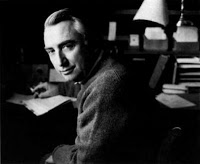Narrative is about how stories are told. Applying different models of narrative structure to your work may reveal unconscious things that you did in the way you constructed it.
Binary Oppositions - Levi-Strauss
Claude Levi-Strauss introduced the notion of binary oppositions as a useful way to look at narrative structure. Binary oppositions are sets of opposite values which reveal the structure of media texts. Examples of binary oppositions that might be found in some moving image narrative might be:
Good vs. Evil
Male vs. Female
Humanity vs. Technology
Nature vs. Industrialisation
Dark vs. Light
East vs. West
Beyond its application to individual narratives, Levi-Strauss's theory can and should be used to assess groups of texts and genres. The binary oppositions of a Thriller include-
Protagonist vs. Antagonist
Law enforcement vs. Crime
Detective vs. Criminal
Mainstream Vs. Outsider
Character Types- Vladimir ProppVladimir Propp studied Russian folk and fairytale's before deciding that all narratives have a common structure. He observed that narratives are shaped and directed by certain types of characters and specific kinds of actions. He believed that there are 31 possible stages or functions in any narrative. This may not appear in the same story but will appear in the same sequence.
Propp believed there were seven roles which a character may assume in the story-
Villain- Struggles with Hero
Hero- departs on a search (seeker-hero), reacts to donor and weds at the end
Donor- Prepares and/or provides hero with magical agent
Helper- Assists, rescues, solves and/or transfigures the her
Princess- a sought for person (and/or her father) who exists as a goal and often recognises and marries hero and/or punishes villain.
Dispatcher- Sends hero off
False Hero- Claims to be the hero, often seeking and reacting like a real hero
Enigma Code- Roland Barthes'
Barthes' enigma code is explained as being a tangled ball of threads that needs unravelling so that you can separate out the colours. One the text starts to unravel, you encounter the absolute plurality of potential meanings. You can start by looking at a narrative in one way, from one viewpoint giving a meaning the that piece of text, you can then unravel the narrative from a different angle, by pulling at a different thread which creates an entirely different meaning for the text. This theory suggests that any text, such as television a film or a poster makes the audience question something and intrigue the audience to draw them in.
Barthes' Theory of the five codes is a way of grouping signifier according to the role they play in the text.
These are categorised as-
The Hermeneutic code- the voice of truth
The Proairetic code- the voice of empiric's
The Semantic code- the voice of the person
The Symbolic code- the voice of the symbol
The Cultural Code- the voice of the knowledge
















